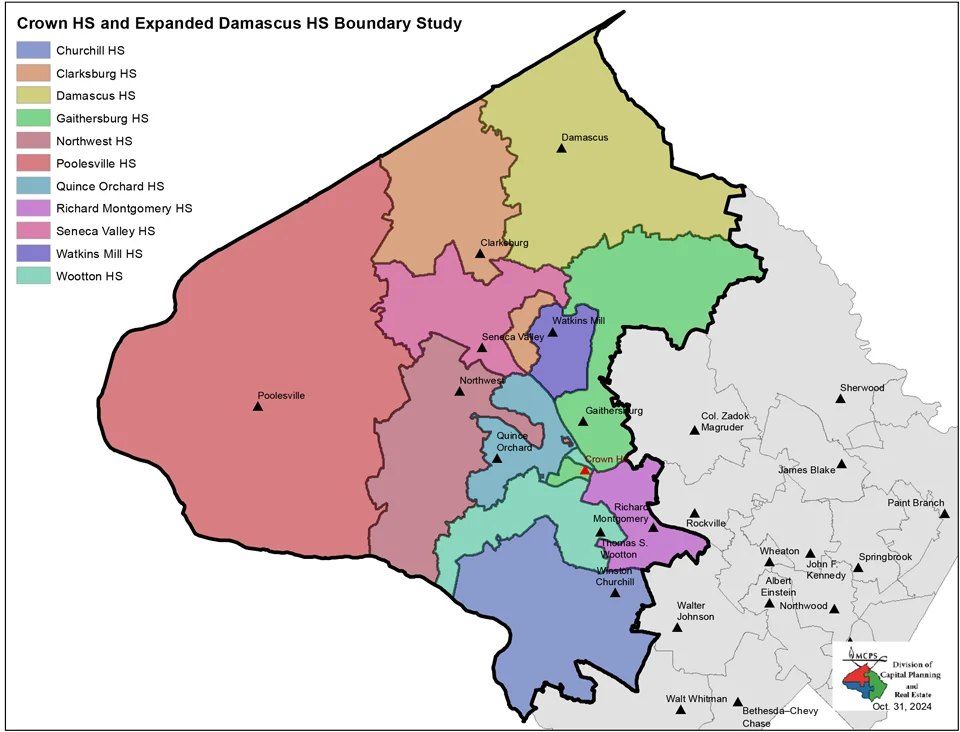MCPS: Reform the SMOB election process
The current SMOB election system doesn’t represent all of MCPS fairly. To help fix this, a primary should be held by each high school to encourage a wider variety of students to participate.
May 29, 2021
On April 22, I clicked on an unassuming link on Canvas. My SMOB election ballot flashed onto the screen — and instantly left me in shock. Why did both candidates come from Richard Montgomery High School? I had been hoping for competitors with diverse backgrounds who could bring different perspectives to the table.
Every year, secondary school students in Montgomery County vote for their choice of Student Member of the Board (SMOB), the elected official who sits on the county Board of Education. The position’s aim is to increase student representation on a board filled with adults, with the hope that the SMOB will listen to what students want and work with county officials to achieve those goals.
As such, one would think that MCPS holds SMOB elections that fairly represent the interests of all Montgomery County students. Unfortunately, this isn’t the case.
There is no limit on the number of students per school who can run for SMOB, and schools with more candidates, therefore, have a higher chance of catapulting one of their students into the position. Because of this, these schools — which are uncoincidentally those with more resources, or technical programs like Richard Montgomery’s — end up dominating the system. Of the past 15 SMOB winners, five were from Richard Montgomery, even though there are 31 high schools in Montgomery County.
MCPS needs a rule that each school can send only one candidate to the annual SMOB nominating convention. To make this work, schools would hold a prior primary election — just as the United States does nationally every four years — to pick one candidate to advance to the next round. By ensuring that each school has no more than a single student running in the general election, a primary system would create a more level playing field from the start.
In the current process, the SMOB election begins in January, when the county holds a nominating convention to narrow down the dozens of hopeful sophomores and juniors. Each school has a certain number of delegates based on its population. After every SMOB candidate makes an opening statement, the delegates vote to reduce the number of students by half — unless there are more than 20 candidates, in which case they reduce the number to 10. Following a Q&A period, another vote produces the two SMOB finalists, one of whom the MCPS secondary school population elects in the spring.
Implementing a primary system would encourage students from a wider range of schools to seek the countywide political position. In turn, this would give broader representation to the county as a whole, permitting officials to better solve issues that affect the whole county and not just a few select schools. For example, if a high school receives insufficient funding, a SMOB from Richard Montgomery likely wouldn’t be as equipped to solve this issue as a student who actually attends that school.
Additionally, a primary system would more suitably represent all of Montgomery County. In the current system, many of the students who take on the SMOB position represent the same small group of students year in and year out. If the SMOBs’ backgrounds varied more, MCPS students would be that much closer to the Board’s decision-making process.
Opponents may argue that capping the number of SMOB candidates from each school would make MCPS students all the more distant from local government. After all, fewer students would be able to participate in the election at the county level. However, the truth is that additional primaries would amplify the engagement of the student body. By selecting candidates whom they know better in initial elections at the school level, students would likely participate more earnestly and consider platforms to a greater extent.
If the SMOB’s goal is truly to serve on behalf of the most students possible, MCPS should adopt a more representative system. An additional primary system would make the SMOB election process more equitable. I can only hope that the next time I vote, the candidates are from different schools.









